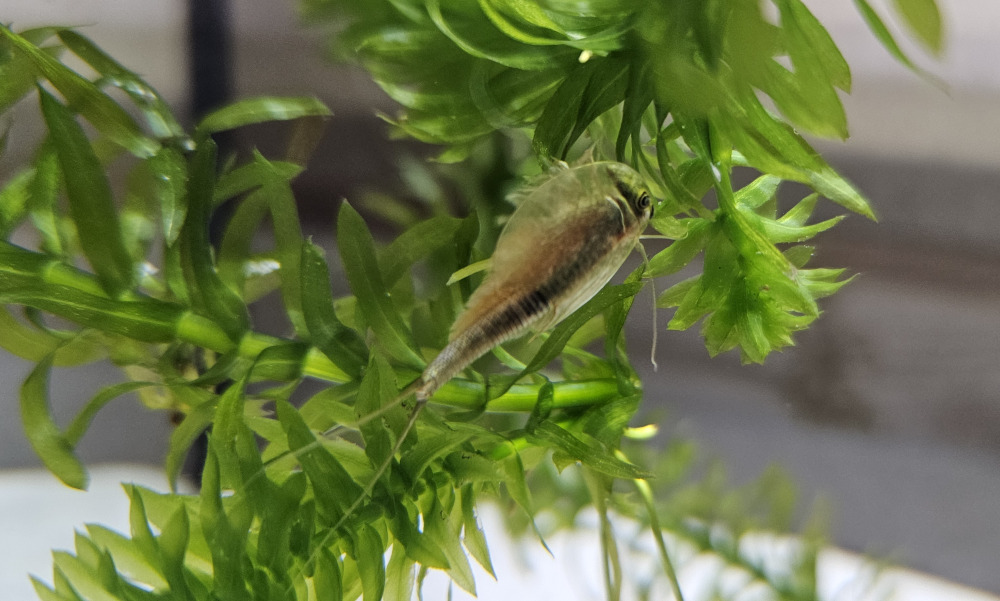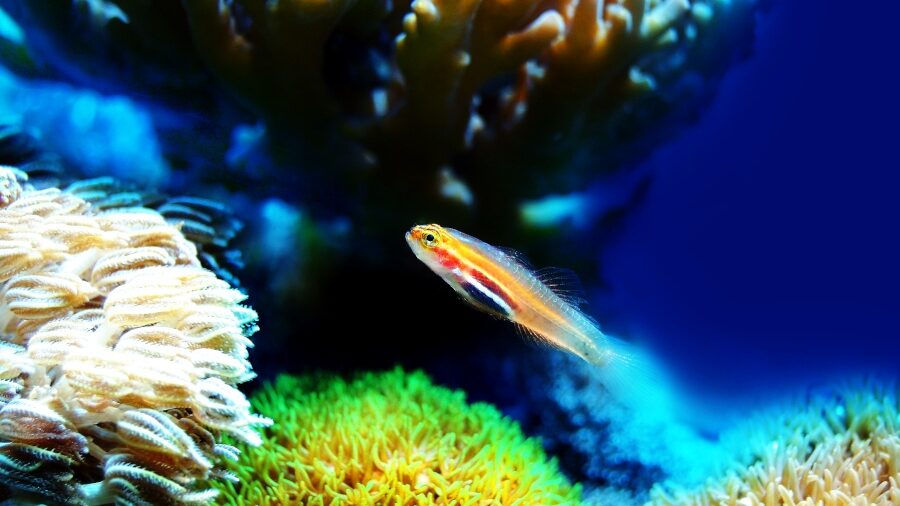Guide
Setting up an aquarium properly: A guide for beginners
Setting up a new aquarium is one of the most important steps in creating a healthy and stable environment for your future prehistoric crustaceans, fish and plants. If you’re just starting out with aquariums, this process can seem a little overwhelming at first. But don’t worry, with the right guidance and a little patience, you’ll soon be able to set up a beautiful and healthy aquarium. In this article, you’ll learn everything you need to know about starting up your aquarium – from preparation and set-up to maintaining the water and introducing the first inhabitants. Join me on this exciting journey and learn how to set up your aquarium properly to create a thriving underwater world.

Start up your aquarium properly: Why is this necessary?
Starting up an aquarium is a crucial step in creating a stable and healthy environment for the fish and plants. During the start-up phase, a colony of beneficial bacteria develops in the filter and substrate. These bacteria are essential as they convert ammonia produced by fish waste and food scraps into less harmful substances. The process of running-in ensures that enough bacteria are present to keep the water clean and healthy. Freshly set up aquariums do not yet have established bacterial colonies that break down harmful ammonia and nitrite. These substances can be extremely toxic to fish. By running the aquarium in, you allow the biological filter to develop and mature, safely breaking down the concentrations of ammonia and nitrite before fish are added.
During the start-up phase, the aquarium goes through various phases in which the water parameters change. This includes fluctuations in pH value, ammonia, nitrite and nitrate. By running in, you can ensure that these values stabilise before you add fish and other living creatures. A stable aquarium is less susceptible to sudden changes that could harm the fish. A well-established aquarium promotes the health and well-being of all inhabitants. Plants can establish and grow better and fish find a stress-free environment. A stable biological balance also prevents the excessive growth of algae and harmful bacteria. By carefully running in the aquarium, you lay the foundation for long-term success. A stable, well-run-in tank requires less maintenance and is more resistant to problems such as diseases or algae blooms. This means less stress and more enjoyment of your hobby. For this reason, you should run the aquarium in properly.
Setting up an aquarium correctly: Ammonium peak and nitrite peak
Running in an aquarium is a crucial process in order to create a stable and healthy environment for the future inhabitants. Two important phases during this process are the ammonium peak and the nitrite peak. Both play a central role in the aquarium’s nitrogen cycle and must be carefully monitored to ensure optimum water quality.
Ammonium peak
The ammonium peak marks the beginning of the running-in process. When you set up your aquarium and add water, organic substances such as fish food, plant remains or waste begin to decompose. This produces ammonium, which can be converted into ammonia at higher pH values. Ammonia is extremely toxic for fish and other aquarium inhabitants.
The ammonium peak occurs because organic substances decompose in a newly set up aquarium and release ammonium. These organic substances can be fish food, plant remains or other biological materials. In a newly set up aquarium, there are not yet sufficient colonies of nitrifying bacteria to break down ammonium. These bacteria, which are responsible for the breakdown of ammonium to nitrite and finally to nitrate, must first colonise and multiply. During this initial phase, ammonium can accumulate in the water because the degradation rate by bacteria is not yet high enough. This leads to an increase in the ammonium concentration, also known as an ammonium peak.
Nitrite peak
After the ammonium peak, the second phase of the running-in process begins: the nitrite peak. Nitrifying bacteria (Nitrosomonas) begin to convert the ammonium into nitrite (NO2). Although nitrite is less toxic than ammonia, it can still be harmful to fish and should therefore be monitored and controlled. It is therefore essential to keep an eye on the nitrite peak if you want to set up the aquarium properly.
The nitrite peak occurs because the nitrifying bacteria in the aquarium first convert ammonium into nitrite. In the initial phase of the running-in process, there are already some bacteria that break down ammonium, but not yet enough bacteria that further convert nitrite to nitrate. This leads to nitrite accumulating in the water. As nitrite is also toxic to fish, it is important to monitor this phase closely. Only when sufficient nitrite-oxidising bacteria, such as Nitrobacter, have formed can the nitrite be efficiently converted into nitrate, which causes the nitrite peak to subside.

Can I speed up the running-in phase?
The running-in phase of an aquarium is crucial for creating a stable and healthy habitat for fish and plants. Normally, this phase lasts around four to six weeks, during which beneficial bacteria colonise the filter material and substrate and the nitrogen cycle is established. However, there are several methods to speed up this process so that fish can be introduced more quickly and safely. You should run the aquarium in properly, but here I will explain how you can shorten the running-in phase.
1. Use of bacterial preparations
One of the most effective methods for accelerating the running-in phase is the addition of commercially available bacterial preparations. These preparations contain concentrated cultures of beneficial bacteria that support the breakdown of ammonia and nitrite. Products such as ‘BactoStart’ or ‘BioSpira’ are examples of such bacterial cultures. By immediately introducing these microorganisms into the aquarium, the biological filter can become effective more quickly.
2. Transfer of filter material from an established aquarium
Another tried and tested method is to transfer filter material from an already established aquarium. Sponges, biofilter media or even substrate from a functioning aquarium are rich in beneficial bacteria. Placing this material in the filter of the new aquarium accelerates the colonisation of the necessary bacteria. This method is particularly effective as the bacteria are already adapted to the aquatic environment.
3. Use of decorations and substrates
Similar to the filter material, decorations, stones and substrates from an established aquarium can also be used to support the bacterial balance in the new aquarium and to properly break in the aquarium. These items are often colonised by bacteria colonies that help to start the nitrogen cycle.
4. Introduction of small fish or snails
You want to run the aquarium in properly. Carefully introducing a few robust fish or snails can speed up the running-in process. These animals produce ammonia, which serves as food for the beneficial bacteria. It is important to keep the number of animals low to avoid overloading and to minimise the risk of ammonia and nitrite peaks.
5. Use of fast-growing plants
Fast-growing aquarium plants such as waterweed (Egeria densa) or hornwort (Ceratophyllum demersum) can also help to speed up the running-in phase. These plants absorb excess nutrients, including ammonia and nitrate, and promote a healthy balance in the water.
Starting up an aquarium properly in 6 steps
Step 1: Preparing the aquarium
Before you start running in, you should make sure that the aquarium and all the necessary utensils are clean. Do not use any chemical cleaning agents, but rinse everything thoroughly with warm water. Place the aquarium on a stable, level surface and position it so that it is not exposed to direct sunlight to prevent algae growth.
Step 2: Setting up the aquarium
- Add the substrate: Spread the substrate (gravel or sand) evenly in the aquarium. A layer of around five to eight centimetres is ideal.
- Decoration and plants: Place stones, roots and other decorative elements. Use living plants as they support the nitrogen cycle and absorb nutrients.
- Fill with water: Fill the aquarium slowly with water so as not to disturb the substrate and plants. Use a water conditioner to neutralise chlorine and other harmful substances.
Step 3: Install technology
- Filter: Install the filter according to the manufacturer’s instructions. The filter is crucial as it purifies the water and provides a colonisation area for bacteria.
- Heating: If you want to keep tropical fish, install a heater and set the temperature (usually between 24 and 26 °C).
- Lighting: Use the aquarium lighting to provide the plants with the light they need and programme the lighting duration to around eight to ten hours per day.
Step 4: Starting the running-in process
- Add filter bacteria: To speed up the running-in process, you can use special bacterial starter products that contain beneficial bacteria.
- Be patient: Allow the aquarium to settle for at least three to six weeks before introducing Triops and fish. During this time, the beneficial bacteria in the filter and substrate will build up and convert ammonia and nitrite into less harmful nitrate.
Step 5: Check water values regularly
If you want to run in the aquarium properly, you should test the water values regularly during the running-in phase. Important parameters are:
- Ammonia: Should rise at the beginning and then fall to zero.
- Nitrite: Increases after the ammonia peak and should eventually also drop to zero.
- Nitrate: Should increase moderately and usually remains below 50 mg/l.
Step 6: Adding the first fish
When the water values are stable and safe (ammonia and nitrite at zero), you can introduce the first fish. Start with a small number and continue to monitor the water values to ensure that the system can maintain the biological balance. This way you can start your aquarium properly.
Setting up the aquarium correctly – Conclusion
Setting up an aquarium correctly is an essential process for creating a stable and healthy environment for fish and other aquarium inhabitants. The aim is to establish a biological balance that converts harmful substances such as ammonia and nitrite into less harmful nitrate. This is achieved by the colonisation and multiplication of nitrifying bacteria. During the start-up phase, the aquarium should initially be operated without fish and the water values should be checked regularly to observe the development of the bacterial colonies. The use of starter bacteria can accelerate the process. It is important to be patient and not to rush this process, as a stable bacterial population needs time to develop.
As soon as the water values are stable and no more dangerous concentrations of ammonia and nitrite are measured, you can gradually introduce fish into the aquarium. It is advisable to do this slowly and in small groups so as not to overload the biological balance. Overall, a careful and patient introduction of the aquarium will result in a healthier and safer environment for the aquarium inhabitants and prevent long-term problems such as diseases and algae blooms.